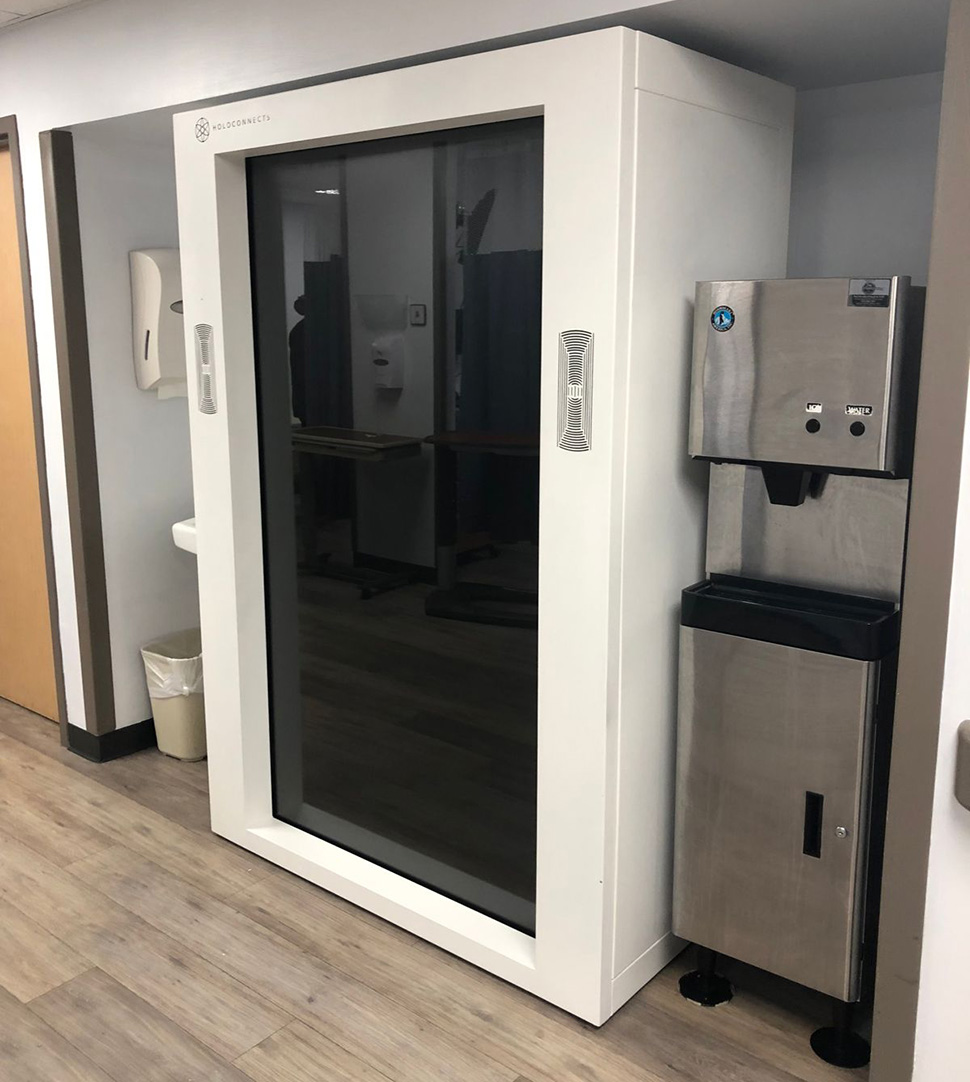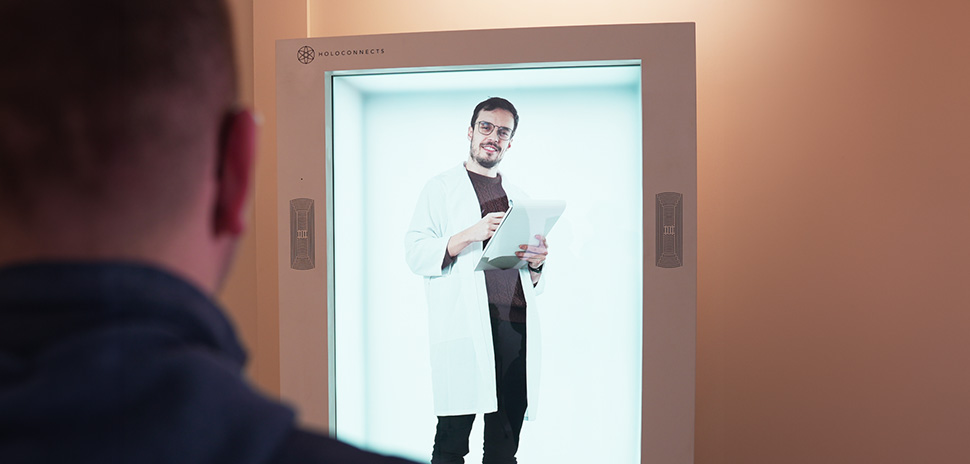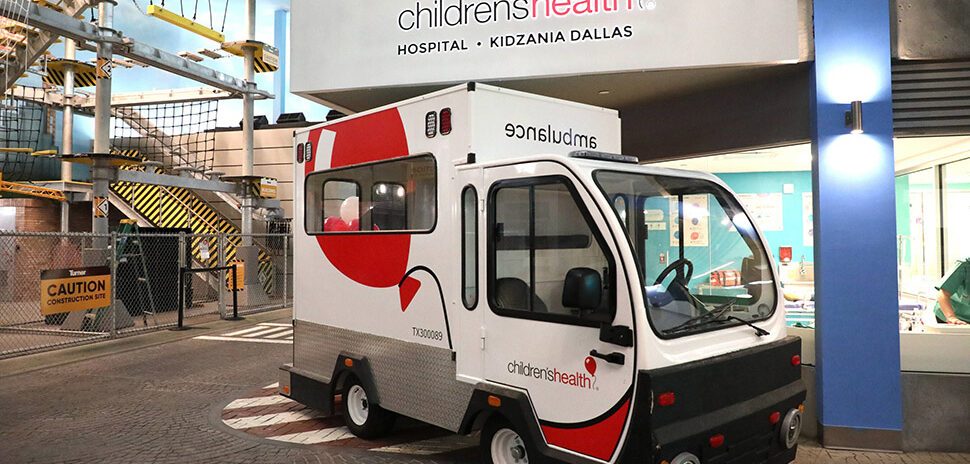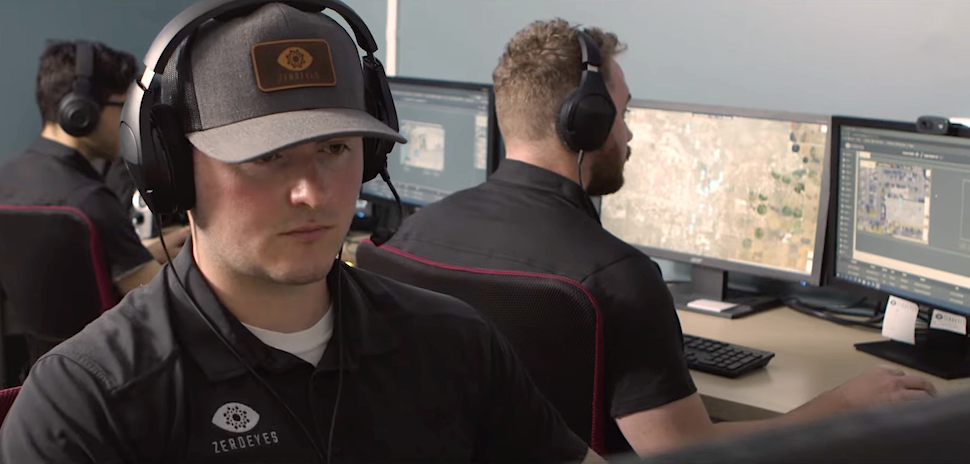Crescent Regional Hospital in Lancaster said it’s the first hospital in the nation to utilize life-size, highly advanced holographic technology for patient care via a partnership with Netherlands-based Holoconnects—a provider of 3D holographic solutions including Holobox and Holobox Mini hologram displays.
Crescent said that integrating Holoconnects’ Holobox technology will enable doctors to “teleport” as a life-size 3D hologram and connect with patients in real time, transforming communication between doctor and patient and creating “an immersive, engaging, interactive experience.”
“Teleporting our doctors in real time to connect and speak with our patients from any location as a life-size hologram gives our patients access to the healthcare they deserve. It also saves our doctors one of their most precious resources—time—enabling them to see as many patients as possible,” Raji Kumar, CEO and managing partner of Crescent Regional Hospital, said in a statement. “Integrating Holoconnects’ Holoboxes within our hospitals will shorten patient wait times, increase access to specialist care, and improve patient care across multiple disciplines.”

The 86-inch Holobox at Crescent Regional Hospital. [Photo: Holoconnects]
Crescent Regional Hospital said it has installed its first full-size 86-inch Holoconnects’ Holobox hologram display and video studio.
The hospital plans to install 24-inch Holobox Mini displays at several locations throughout the hospital and associated clinics.
From the brink of closure to ‘hospital of the future’
Crescent Regional said its mission is to become the “hospital of the future”—a facility where technology and human ingenuity combine to break down historical barriers to superior healthcare access, including underserved communities. The hospital said patients can now schedule a non-touch visit with their doctor or any range of medical specialists from the Dallas area or anywhere in the world.
Crescent Medical Center Lancaster, now known as Crescent Regional Hospital, was in danger of a permanent closure just six years ago, the hospital said.

Crescent Regional Hospital CEO Raji Kumar (left) and Holoconnects CEO & Co-Founder André Smith [Photos: Crescent Regional and Holoconnects]
The Lancaster, DeSoto, South Dallas, and surrounding Texas communities served by Crescent Medical Center Lancaster were in “a healthcare void,” with a community of predominantly black and Latino residents accustomed to receiving second or third-tier healthcare, a spokesperson for the hospital stated. Offering innovative, state-of-the-art solutions like the Holobox is one way the hospital aims to change that.
The facility was bought by Kumar in 2018 and rebranded as Crescent Regional Hospital.
Kumar said she has prioritized community-centric hiring practices, strategic talent acquisition initiatives, and emerging technology adoption. Crescent Regional Hospital said it has since set a new standard in cardiovascular healthcare in the region. It now performs 300 orthopedic and spine surgeries and nearly 1,700 other surgeries annually and opened a state-of-the-art cardiac catheterization lab in 2023.
Hologram hospital uses
Immediate use cases of Holoconnects’ life-size hologram technology for Crescent Regional Hospital include, per the hospital:
- Virtual Consultations Pre- and Post-Surgery: Patients can have personal interactions and consultations with Crescent’s healthcare providers via teleportation to a remote location for any of Crescent’s specialties, including cardiology, emergency care, gastroenterology, neurology, orthopedic care, pulmonology, general surgery, spine health, wound care and more.
- Telemedicine Rounds: Doctors can conduct “virtual” rounds with patients and hospitalists to discuss treatment plans and progress and economize on the time it takes to travel by car to patient locations.
- Physician/Specialist Consultations Pre- and Post-Surgery: Patients can access Crescent Regional Hospital specialists and their expertise remotely, opening up more availability for the physician and eliminating possible weeks or months of wait time for the patient to see them. Due to added schedule flexibility, doctors save up to 20 hours a week, which allows them to see more patients and address urgent cases.
- Collaborative Care Planning: Multidisciplinary teams can collaborate on patient care plans and treatment strategies, promoting seamless communication and coordination.
- Patient Education: Holograms can help educate patients about their medical conditions, treatment options, pre-surgery instruction, and post-discharge care instruction. Patients are comfortable interacting with holograms as it feels like seeing a doctor in person.
Crescent said that Holoconnects representatives trained hospital clinicians, staff, and its technical operations team on the technology.
Crescent Regional Hospital said it plans to expand its use of real-time hologram technology to assist with other hospital needs, such as remote diagnostics, remote surgery assistance, language interpretation, medical training and education, and medical device demonstrations.
“Holograms have the potential to improve every facet of health care, from streamlining scheduling to expanding access to clinical expertise to helping physicians save time,” Holoconnects’ North America Managing Director Steve Sterling said in a statement. “We’re delighted to partner with Crescent Regional Hospital and help them provide better care and service to their patients, particularly patients historically marginalized by the health care system.”
![]()
Get on the list.
Dallas Innovates, every day.
Sign up to keep your eye on what’s new and next in Dallas-Fort Worth, every day.
































